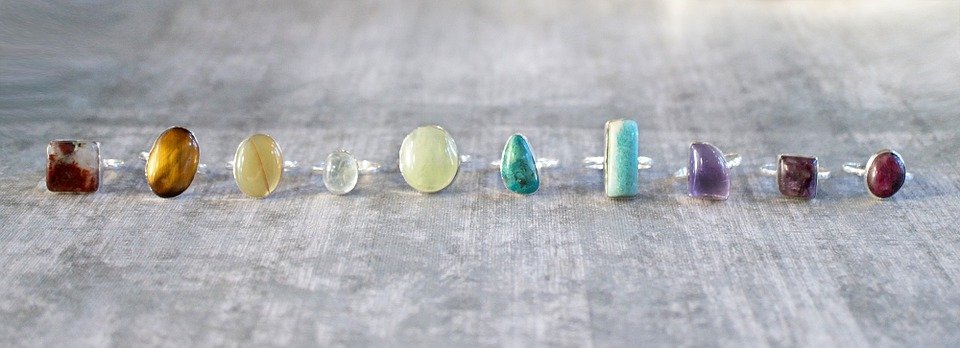
Stone Setting Types
When you’re designing jewelry, it’s all about the details, and choosing the right
stone setting type is paramount to showcasing the gems you work with and
creating the ideal piece. There are many factors to consider when determining the best jewelry setting type for your stone, including the color and cut of the stone, and the style of your piece. Read on for some advice from the jewelry design and manufacturing experts at MKM Jewelry that’ll help you bring your piece to life.
Best Settings for Gem Colors
When you’re trying to decide on a jewelry setting type, first consider the hue of your gemstone and select a metal that will complement its coloring. Even diamonds come in varying tints of white and yellow that should be considered before choosing a metal.
Diamonds
If you are using diamonds in your stone setting type, pay attention to the grade of diamond you have. The most valuable diamonds are graded D through F, and are colorless. These perfectly white diamonds are striking when set against yellow gold, which contrasts beautifully with the bright white stone. However, the yellow gold can also cast a yellow tint on these high-grade diamonds. If you want to highlight the colorless brilliance of these stones, setting them in
white gold or platinum is often a better choice.
Diamonds graded K or lower have a noticeably yellow tint. When working with these yellower stones, it is best to pair them with a yellow gold, as this hides the lower quality of the gem. Avoid platinum or white gold because these will cause yellow diamonds to appear dingy and dark.
Other Colorful Gems
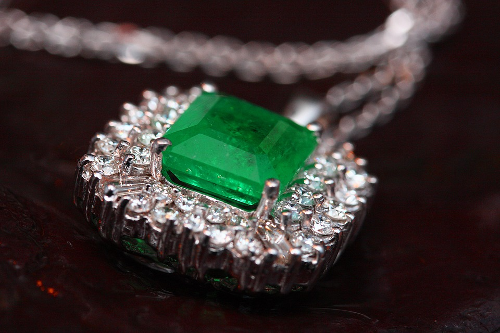
When you’re working with other precious gems, keep some basic color theory in the back of your mind. Cool toned gems, like sapphires and emeralds, tend to look best with cool toned metals like silver, platinum, or rhodium. Pair warm hued gems, such as rubies or garnet, with yellow or rose gold to bring out the warmth and richness of the stone.
While these are basic guidelines, rules are made to be broken. An amethyst or sapphire can be very striking when paired with gold since purple/blue and gold are complementary colors. The contrast between the two hues makes each color look brighter and more vibrant, which can make for a particularly dazzling piece of jewelry.
Best Setting for Each Stone Cut
Selecting the best stone setting type for your jewelry is largely dependent on the cut of your gemstone. Whether it’s a round, square, or oval stone changes the ideal setting.
Round Cuts
The most common cut for a gemstone is the Round Brilliant cut. Round cut gems look great with a traditional prong setting. Most designs use either four or six prongs to secure the stone. With fewer prongs, more light can hit the side of the stone, which increases its brilliance. However, fewer prongs also make for a less secure stone. Many designers opt for a six prong setting, so that if one prong is damaged, the stone is still safely secured.
Another great jewelry setting type for round stones is a bezel setting. In a bezel setting, a gemstone is set within a ring of metal that wraps over the top edge of the stone. Bezel settings offer a clean, seamless design, but can also make the stone look smaller, as the top and sides are covered by metal. Bezel settings are also very secure, and help protect the stone from chipping or scratching.
Square Cuts
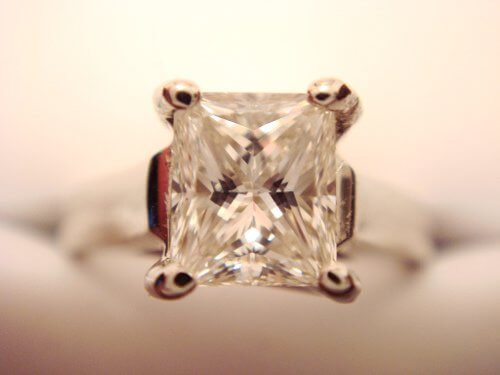
Square cuts encompass princess and cushion cuts among their number. When choosing a stone setting type for a square cut gem, usually a simple, four prong setting is preferred to emphasize the shape of the stone and allow for maximum sparkle. For a more dynamic style, consider rotating any square cut stone so that it is angled like a rhombus. Square shaped diamonds make for stunning solitaire engagement rings, and can also be beautiful as stud earrings.
Oblong Cuts
Oblong shaped stones — such as oval cut and emerald cut gems — usually look most dramatic when set in four prongs, which exaggerates the stone’s size and regal shape. These dramatic stone setting types make a center stone in a ring look stunning, and is enhanced even more when flanked by smaller stones or baguette diamonds.
Unusual Cuts
When using stone cuts that feature sharp points and dramatic angles, such as pear shaped, heart shaped, and marquise cut gems, you may want to consider a stone setting type that protects the point from chipping and other damage. A V-shaped prong should secure the point of the stone, or the entire gem can be bezel set for extra protection.
A more modern take on unusual cuts, the tension setting is a sleek, contemporary jewelry setting type. In a tension setting, the stone appears to float between two rods, allowing the stone to be seen from all angles, and creating a magical levitation effect.
Best Setting for Embellishment Stones
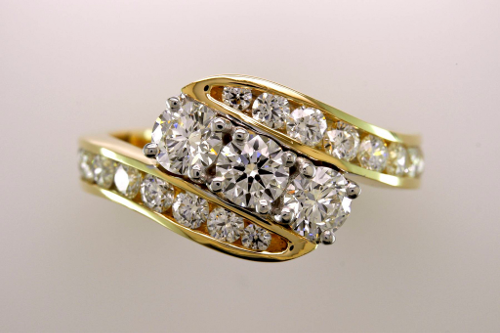
After you have settled on the ideal stone setting type for your center stone, there are many ways to embellish your piece. Any small stones that you choose to place along the shoulders or band of a ring, or framing the center stone, have to be set as well.
Channel Setting
The channel setting is particularly popular on rings that want to showcase gems along the entire band. A deep cut is molded into the band and small stones are embedded within it. This stone setting type holds the stones in place with grooves on both inner walls of the metal.
Pavé Setting
One particularly dazzling jewelry setting type is the pavé setting. In this setting, tiny gems are set side by side to create the impression that the piece is paved with diamonds or other precious stones. The effect is an unbroken sea of gemstones that creates an unparalleled level of sparkle. Pavé settings are stunning as the base of a ring, and can also be used to cover shaped surfaces for
dramatic drop earrings or necklace designs.
Halo Setting
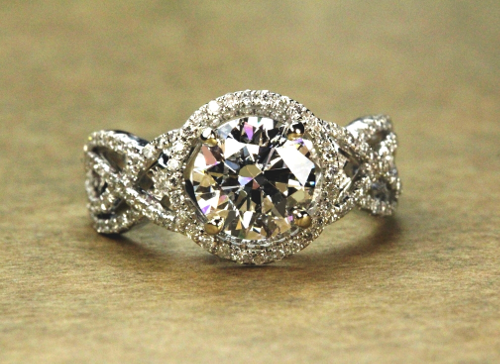
For a traditional, regal design, consider halo setting your center stone. In this stone setting type, the center stone is surrounded by a ring of smaller accent stones. The accent stones can match the center stone, or add a touch of contrasting color. Consider a cushion cut diamond encircled by tiny sapphires, or an oval cut emerald ringed by small diamonds. A halo setting makes the center stone appear larger, and increases overall sparkle for your design.
Working with MKM Jewelry
There is an endless selection of ways you could set stones into your jewelry design, but finding the one that illuminates your gem and ensures that the colors of metal and stone enhance each other is more difficult. Work with the experts at MKM Jewelry today to find the
design help you need.







Leave a Comment